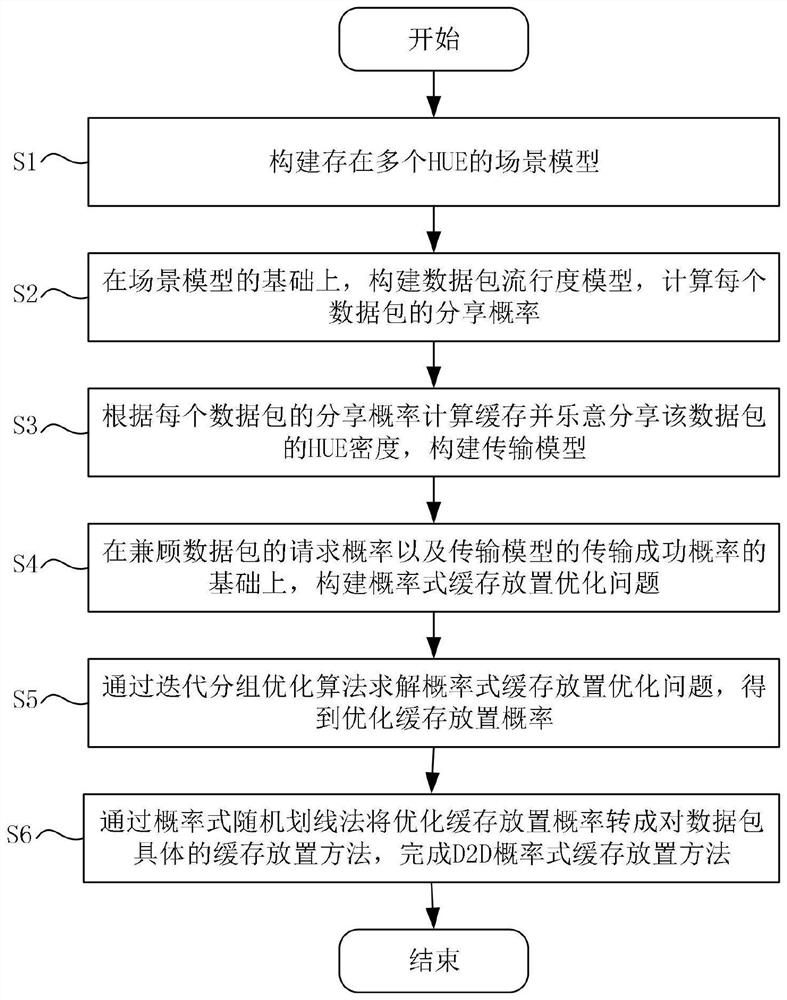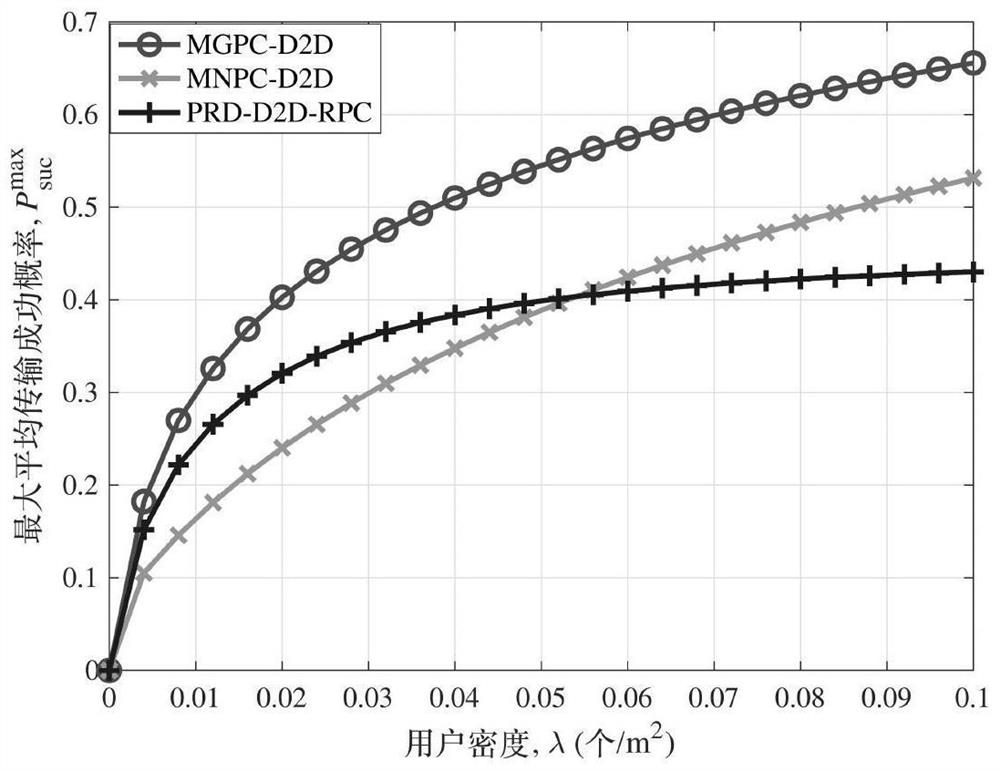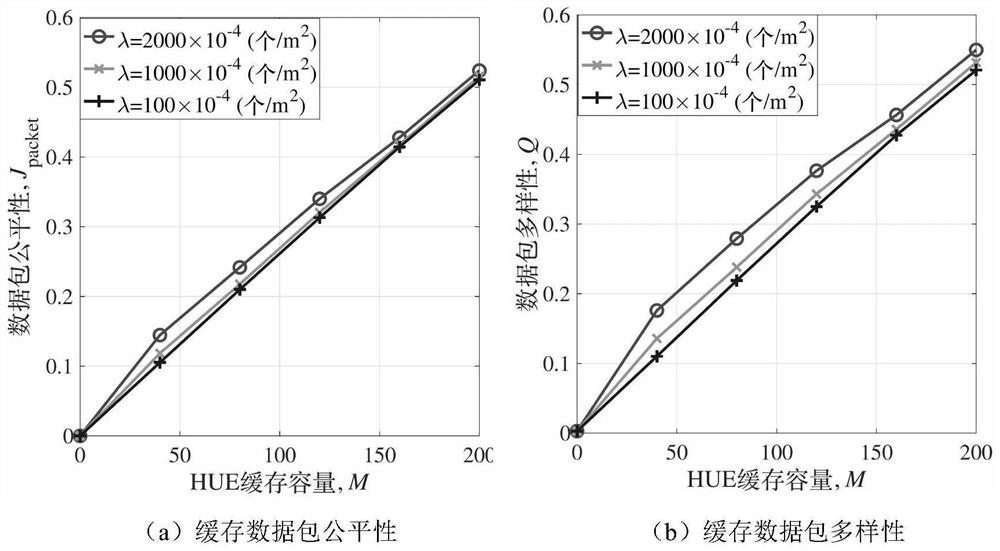D2D probabilistic cache placement method based on user group preference concentration difference
A technology of concentration and user groups, applied in the field of mobile communication, can solve the problems of incomplete packet popularity modeling, not considering the limitation of user cache capacity, etc.
- Summary
- Abstract
- Description
- Claims
- Application Information
AI Technical Summary
Problems solved by technology
Method used
Image
Examples
Embodiment 1
[0105] Such as figure 1 As shown, a D2D probabilistic cache placement method based on the concentration difference of user group preference includes the following steps:
[0106] S1: Construct a scene model with multiple HUEs;
[0107] S2: On the basis of the scene model, construct a data packet popularity model, and calculate the sharing probability of each data packet;
[0108] S3: Calculate the cache according to the sharing probability of each data packet and be willing to share the HUE density of the data packet, and build a transmission model;
[0109] S4: On the basis of taking into account the request probability of the data packet and the transmission success probability of the transmission model, construct a probabilistic cache placement optimization problem;
[0110] S5: Solve the probabilistic cache placement optimization problem through an iterative grouping optimization algorithm to obtain the optimal cache placement probability;
[0111] S6: The optimized cac...
Embodiment 2
[0114] More specifically, on the basis of Example 1, the present invention is further described.
[0115] A. Scene model
[0116] The present invention considers the scenario that there are multiple HUEs in the system, and these HUEs can provide the service of pre-storing or forwarding packet requests for multiple VUEs. Among them, a device with strong functions (such as high battery power and extensive social interaction, etc.) and selfishness (willing to share data packets with high request probability) is selected from UE devices as the HUE. In the design solution of the present invention, the situation that different HUEs have different preferences for data packets is specially considered; the greater the preference probability of a HUE for a data packet, the greater the sharing probability.
[0117] To facilitate the description of the spatial distribution of D2D UEs, the present invention adopts a Poisson Point Process (Poisson Point Process, PPP) model in random geomet...
Embodiment 3
[0209] In order to more fully illustrate the beneficial effects of the present invention, the effectiveness and advancement of the present invention will be further described below in conjunction with specific embodiments and related simulation results and analysis.
[0210]Table 1 System simulation parameter settings
[0211]
[0212] The simulation platform selected for this experiment is In 2018a, the number of random simulations is 1000. Unless otherwise specified below, the typical parameter values selected in the simulation are given in Table 1. This section selects two existing schemes for performance comparison, namely:
PUM
 Login to View More
Login to View More Abstract
Description
Claims
Application Information
 Login to View More
Login to View More - R&D
- Intellectual Property
- Life Sciences
- Materials
- Tech Scout
- Unparalleled Data Quality
- Higher Quality Content
- 60% Fewer Hallucinations
Browse by: Latest US Patents, China's latest patents, Technical Efficacy Thesaurus, Application Domain, Technology Topic, Popular Technical Reports.
© 2025 PatSnap. All rights reserved.Legal|Privacy policy|Modern Slavery Act Transparency Statement|Sitemap|About US| Contact US: help@patsnap.com



